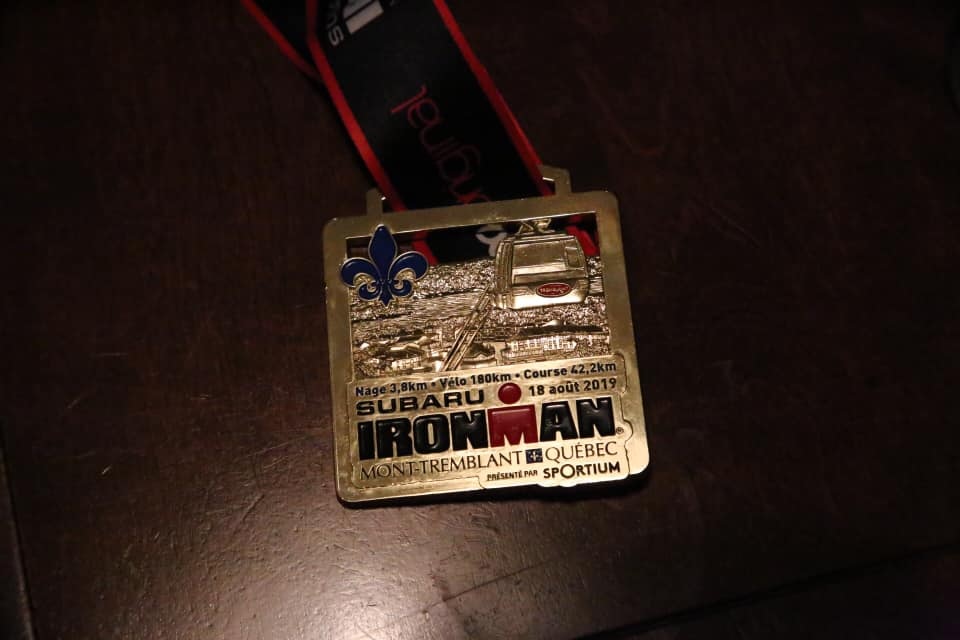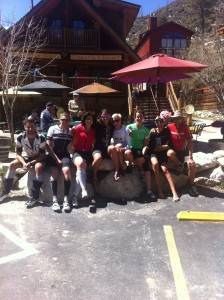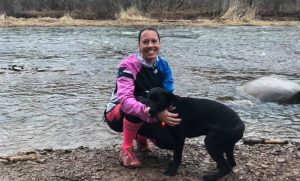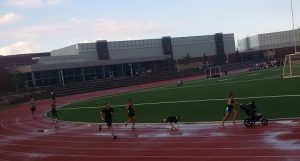Becoming an Ironman wasn’t a given, but it had been my dream for over a decade. At the time, I was a marathoner with an osteoarthritic hip. I ran my only Boston marathon as a celebration…knowing it would likely be my last. Traditionally, hip replacements and running are not compatible, so I started cycling, then swimming to prepare for becoming a triathlete…with a big question mark on the run.
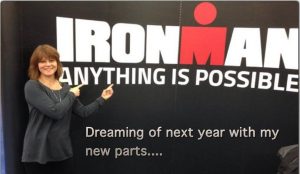
By 2013, I was walking with a cane and had to stop every 10 minutes to let the pain subside. In January 2014, I had my right hip joint replaced. I was 50. My surgeon, Dr. Oleg Safir at Mount Sinai Hospital, specialized in doing hip and knee replacements for younger adults who want to return to an active lifestyle. He told me I would be able to run again, but should probably not do marathons anymore, or run on treadmills and hard surfaces. Doing so would wear the joint out faster, and a hip revision is a much bigger deal than the original replacement. That left me with some hard choices.
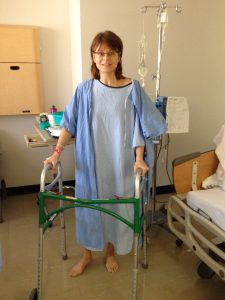
I had been working with Dr. Cindy Lewis-Caballero (Coach Cindy) before the surgery to maintain as much mobility as possible in the osteoarthritic joint, and to alleviate the pain of muscles that were fighting with each other as the joint became bone-on-bone. She helped me to rehab after the surgery and kept a close eye on my progress as I took my first few tentative steps towards running again the following June. By December, I participated in my first post-hip 10k race. Meanwhile, she encouraged me to continue cycling and working on my swim skills, which were typically abominable for someone with a running background.
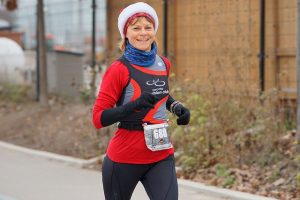
Each year since then I have progressed slowly in the direction of my dream. The journey has taken me through a 25km running race, several century rides (I have done the Ride to Conquer Cancer every year for the past decade), a few standard distance and two 70.3 triathlons. Finally I realized that my body could take the training, and the only thing left standing between me and reaching that dream was the decision to do it. So I took a big gulp and entered Ironman Mont Tremblant 140.6 for 2019.
I also realized that I didn’t need to bring the ‘bad hip’ story along with me anymore. Those earlier races had proved to me that I could still consider myself an athlete. When things got rough, it was because I was allowing myself to use that as an excuse to back down and let up on my performance.
Coach Cindy and Dr. Cindy were a perfect collaboration to get me through this. I actually love the training, and don’t need to do a lot of racing to feel happy, so all of 2019 was dedicated to becoming an Ironman. I took my training seriously and tried not to fall apart completely when hit with a cold early in the year that turned into six weeks of bronchitis. My running also fell apart early in the year when I developed a dropped metatarsal in my foot that took a stupidly expensive pair of custom orthotics, a few tries at different shoes (which didn’t end up helping at all), and the metatarsal pad that Dr./Coach Cindy suggested in the first place to get me back on my feet.
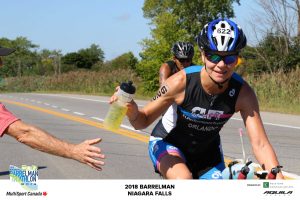
Learning to listen to your Coach and stop trying to self-diagnose or over-think is a big part of training successfully for your first Ironman. Fortunately, I figured this out along the way and went into ‘don’t think…just do’ mode when the training load got heavier. And I no longer questioned whether this was possible because of my hip.
Things took a left turn with my first attempt at the open water swim. All of the work I did in the pool to feel like a stronger (not faster…just stronger) swimmer seemed to disappear the moment I put that wetsuit on. Every year I go through this mental block, and every year I have to force myself to just keep going until it subsides. This year, I decided that it was not going to get in the way of achieving my dream, and tackled the demons head on. Fortunately, a few one-on-one sessions with a swim coach at the Caledon Quarry who simply observed what I was doing from the perspective of a SUP and suggested a few changes to my breathing and mental approach made the difference I needed to accomplish the 4km swims in my program. (I ended up swimming a 10 minute PB in my Ironman race – to my complete astonishment!)
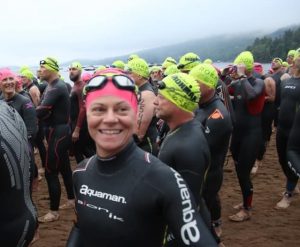
The most important lesson I brought to this race was the power of positive thinking. I knew I was prepared physically and technically for the challenge. I had organized the hell out of my gear, and planned for every possible circumstance, including a mental meltdown. My husband came as my official race Sherpa, and I had family there to cheer and be part of the Ironman experience. That made a huge difference in my confidence and enjoyment knowing they were there and hearing them cheering as I passed by.
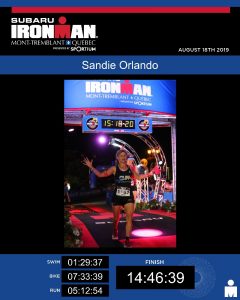
What I didn’t bring to this race was the feeling of being deficient because of my hip. In fact, it turns out that I didn’t bring much baggage to this race in the way of emotions. For a decade, whenever I would envision myself crossing the finish line and hearing the iconic words…You. Are. An. Ironman….I would inevitably be in tears. It didn’t happen. I celebrated and felt awesome at the accomplishment. I was careful in my execution and had no disasters. I became an Ironman, and know that I could do it again. (As long as my surgeon agrees!)
Next year, I’ll focus on building speed and experience in some shorter distances, with an eye to improving my performance and taking on a second Ironman race in 2021. Those transitions need to be a little more efficient, now that I know what I’ll be up against.
Plus, I need some time to think about that tattoo.
